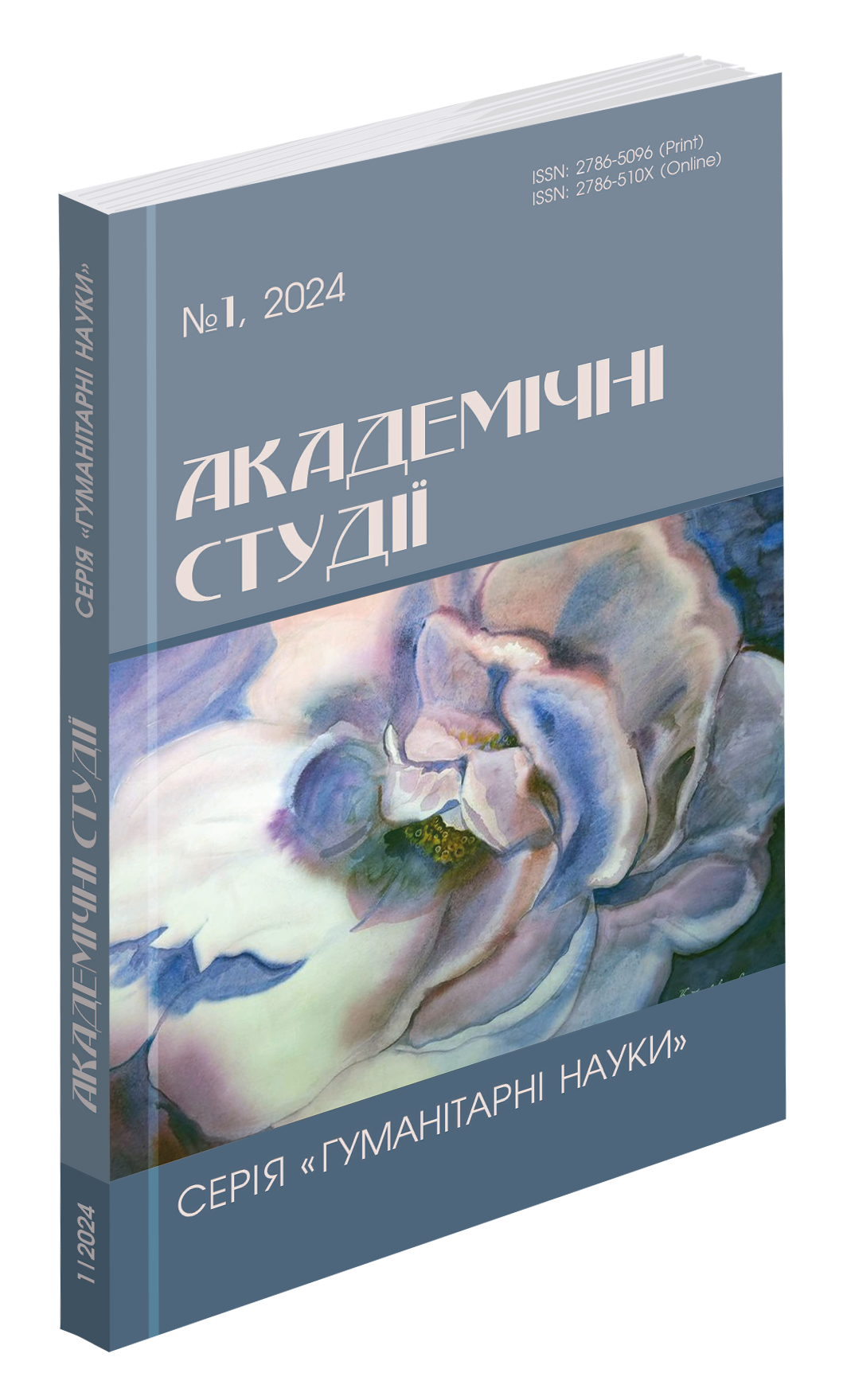Abstract
The article deals with the theoretical assumptions and fundamental principles of a chaos-theory analysis of fiction. The material for the research are James Joyce’s collection «Dubliners» and «Finnegans Wake». The research demonstrates the projection of the theory of chaos (chaology or chaotics) onto the field of literary criticism and interpretation of bellesletters texts. The theoretical foundation of the research is provided by the ideas of Ph. Kuberski, D. Porush, H. Hawkins, T. J. Rice, N. K. Hayles, U. Eco, and P. Stoycheff. The article emphasizes the fact that the theory of chaos allows to provide the analysis of the literary texts where chaos and order, predictability and unpredictability, stability and instability, «the flickering of meaning» and plurality of critical interpretations acquire the status of a thematic and conceptual dominant. Besides, the theory of chaos opens up an opportunity to overcome the spatial-temporal dichotomy of a piece of fiction and thus to reveal its heuristic potential. In addition, the analysis of fiction (specifically, James Joyce’s prose) through the prism on the theory of chaos makes it possible to change the traditional analytical approaches and highlight the hitherto undiscovered characteristics of Joycean oeuvre. The short stories included in James Joyce’s «Dubliners» can be analyzed as the samples of a non-linear dynamical system with due regard to such phenomena as bifurcation, an attractor and a fractal geometry. James Joyce’s «Finnegans Wake» generates such constitutive characteristics of a non-linear dynamic system as irreversibility, auto-reflexivity, non-linearity and self-organization. In the framework of the theory of synergy the main factors of self –organization is the opposing vectors of repellers, on the one hand, and atttractors, on the other. The repellers tend to mould a stable shape of a literary discourse, whereas the attractors contribute to its flexibility and dynamics (L. S. Pichtovnikova). It is possible to assume that syntax in Joyce’s «Finnegans Wake» performs the function of a repeller, while the transgressions on a lexical level of this novel serve as attractors. We can describe the evolution of Joyce’s manner of writing in terms of the sensitive dependence on initial conditions (the butterfly effect): from a predominantly conventional type of narrative in «Dubliners» to a «verbivocovisual» (Joyce) text oscillating between order and chaos with the amplified disturbances at each level of «Finnegans Wake».
References
Бартосяк М. Застосування теорії хаосу в літературознавчих дослідженнях. Література. Теорія. Методологія. / за заг. ред. Д. Уліцької. К. : Києво-Могилянська академія, 2008. 544 с.
Будний В. Між дисциплінами: розширення контекстів літературознавчої галузі чи зміна статусу? Вісник Львівського університету. Серія «Філологічна». Львів, 2008. Вип. 44(1). С. 22–31.
Блум Г. Західний канон: книги на тлі епох. Київ : Факт, 2007. 270 с.
Набитович І. Й. Фрактали та фрактальні структури у художньому тексті (на прикладах прози Л. Керрола, К. С. Льюїса та Х. Л. Борхеса). Вісник Львівського університету. Серія: «Іноземні мови». Львів, 2011. Вип. 18. С. 42–51.
Піхтовнікова Л. С., Яремчук М. І. Дискурс притчі у синергетичному аспекті. Наукові записки Національного університету «Острозька академія». Острог : Національний університет «Острозька академія», 2012. Вип. 26. С. 266–269.
Cеліванова О. О. Сучасна лінгвістика: напрями та проблеми : підручник. Полтава : Довкілля, 2006. 716 с.
Сенчук І. «Поминки Фіннеганові» Джеймса Джойса: категорія відкритості в літературі . Іноземна філологія. Український науковий збірник. Львів, 2007. № 118. С. 284–291.
Aman Y. K. R. Chaos theory and Literature from an Existentialist Perspective. CLCWeb: Comparative Literature and Culturre. Purdue University Press, 2007. Vol. 9, Issue 3.
Eco U. Semiotics and the Philosophy of Language. Bloomington : Indiana University Press. 242 p.
Gleick J. Chaos: Making a New Science. Penguin Books. Anv Rep edition, 2008. 384 p.
Hayles N. K. Chaos and Order: Complex Dynamics in Literature and Science (New Practices of Inquiry). University of Chicago Press, 1991. 316 p.
Hawkins. H. Strange Attractors: Literature, Culture and Chaos Theory. Hertfordshire : Prentice Hall/Harvester Wheatsheaf, 1995. 180 p.
J. A Portrait of the Artist as a Young Man. Alma Books LTD., 2014. 223 p.
Joyce J. Dubliners. Prestwick House, Inc., 2006. 190 p.
Joyce J. Finnegans Wake. Wordsworth, 2012. 656 p.
Kuberski Ph. Chaosmos: Literature, Science and Theory. State University of New York Press, 1994. 224 p.
Porush D. Fictions as Dissipulative Structures: Prigogine’s Theory and Postmodernism’s Roadshow. Cornwell University Press, 1990. P. 54–58.
Rice T. J. Joyce, Chaos and Complexity. Board of Trustees of the University of Illinois, 1997. 204 p.
Stoicheff P. The Chaos of Metafiction. Chaos and Order: Complex Dynamics in Literature and Science. Cornell University Press, 1990. P. 85–89.

